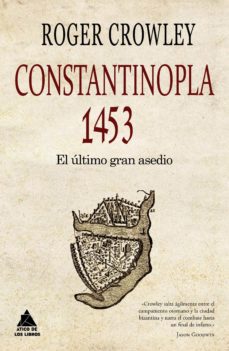
For fifty-five days a tiny group of defenders defied the huge Ottoman army in a seesawing contest fought on land, at sea, and underground. Here is the taut, vivid story of this final struggle for the city told largely through the accounts of eyewitnesses.

On average it had survived a siege every forty years for a millenium-until the Ottoman Sultan Mehmet II, twenty-one years old and hungry for glory, rode up to the walls in April 1453 with a huge army, “numberless as the stars.” Single-handedly it blunted early Arab enthusiasm for Holy War when a second wave of Islamic warriors swept out of the Asian steppes in the Middle Ages, Constantinople was the ultimate prize: “The Red Apple.” It was a city that had always lived under threat. A gripping exploration of the fall of Constantinople and its connection to the world we live in today, 1453 tells the story of one of the great forgotten events of world history, the fall of Constantinople to the Ottoman Turks.įor a thousand years Constantinople was quite simply the city: fabulously wealthy, imperial, intimidating-and Christian.


 0 kommentar(er)
0 kommentar(er)
